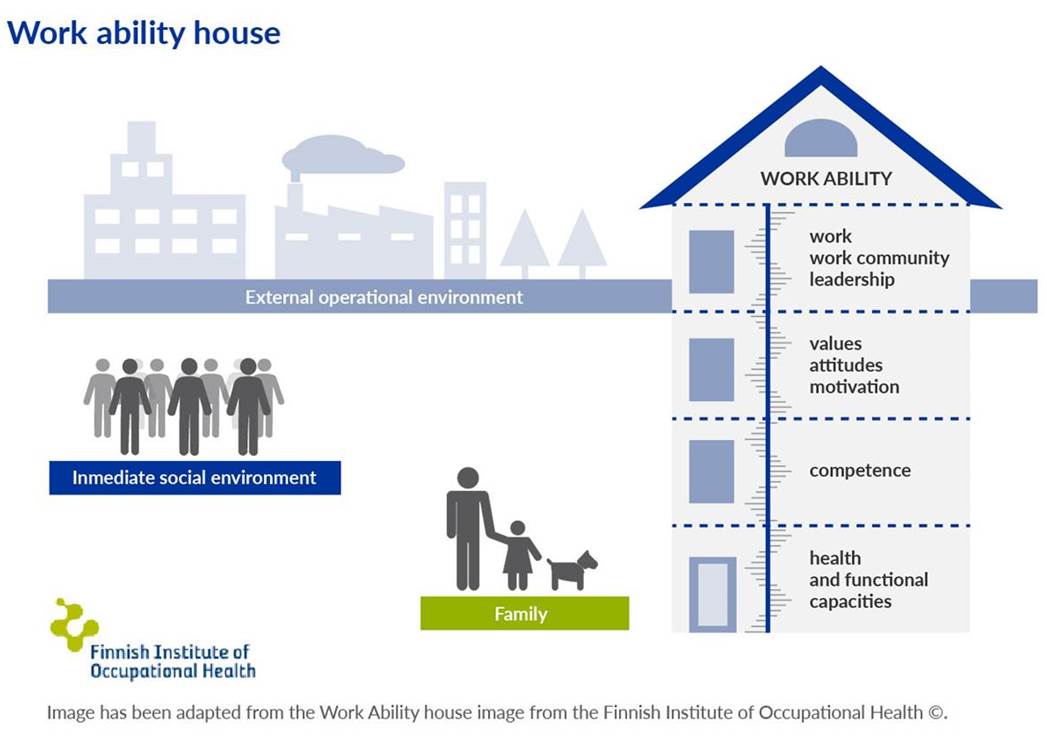Work ability model
Work ability can be described as the balance between the resources of the individual on the one hand and work related factors on the other. Personal resources consist of health and functional capacities (first floor), competence and skills (second floor), and values, attitudes and motivation (third floor). Work comprises work content, work environment, work organisation, and leadership (fourth floor). The stairs between the floors highlight that the different dimensions of work ability interact with each other.

Personal resources change, for example, with age, whereas globalisation and new technology have an impact on work demands. The factors affecting work ability are therefore continuously changing. To ensure good work ability throughout working life, measures need to be taken in all dimensions of work ability – health, skills and competences, and motivation. The maintenance and promotion of work ability requires good leadership and cooperation between employers, managers, supervisors and workers.
Work ability is also influenced by the environment outside work. Family and a person’s close community can also affect a person’s work ability in many different ways throughout the life. Therefore, ensuring work-life balance is important.
Society and the operational environment create the infrastructure, services, and rules that can support organisations in maintaining and promoting work ability.